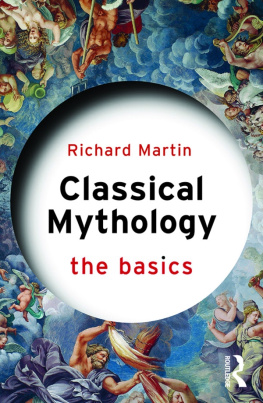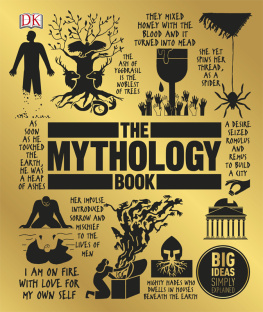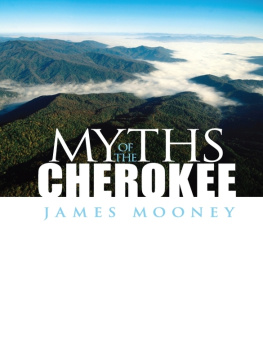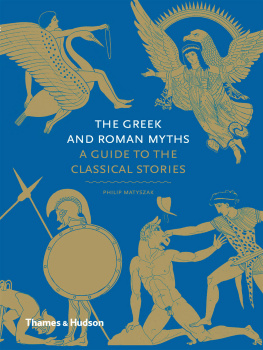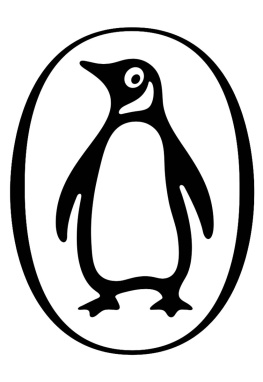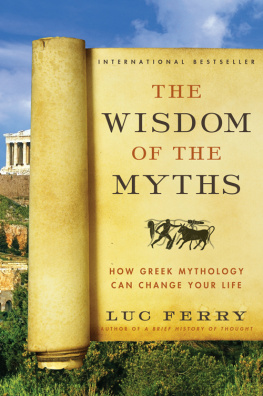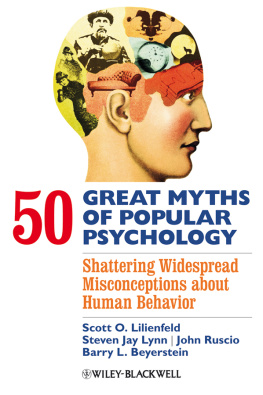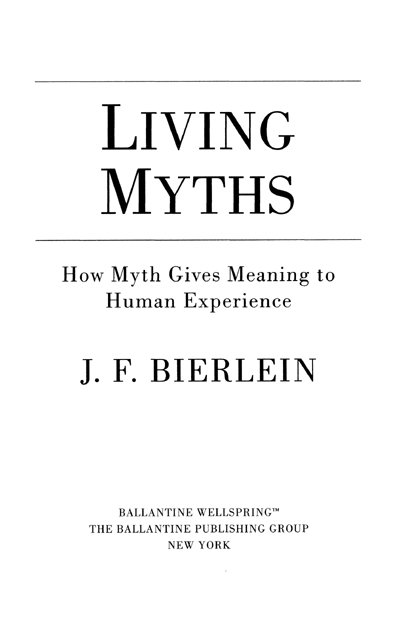A Ballantine Wellspring Book
Published by The Ballantine Publishing Group
Copyright 1999 by J. F. Bierlein
All rights reserved under International and Pan-American Copyright Conventions. Published in the United States by The Ballantine Publishing Group, a division of Random House, Inc., New York, and simultaneously in Canada by Random House of Canada Limited, Toronto.
Ballantine is a registered trademark and Ballantine Wellspring and the Ballantine Wellspring colophon are trademarks of Random House, Inc.
http://www.randomhouse.com/BB/
Library of Congress Cataloging-in-Publication Data
Bierlein, J. F.
Living myths : how myth gives meaning to human experience / J. F. Bierlein.
p. cm.
Includes bibliographical references.
eISBN: 978-0-307-43438-8
1. Mythology. I. Title.
BL311.B535 1999
291.13dc21
98-38533
v3.1
Contents
Authors Note
This book is the product of a series of questions that have been posed to me by people since the publication of the first of my books on myth, Parallel Myths, in 1994. The earlier work looked at themes in mythology, theories of interpretation, and the similarities between myths of different cultures. This book is the result of the logical next step in our inquiry into myth and its meaning: How does myth provide meaning to human existence? It looks to the truths of human experience that were reflected in the lives of people centuries ago, and the relevance of those truths today.
In order to examine the role of myth in finding meaning, it was necessary to divide human existence into experiences that we all know. The first chapter is on fathers and sons. While one on mothers and daughters would be useful, the traditional myths are generally fairly patriarchal. Luckily some of the same issues can be applied across gender. The next chapter, which deals with myths of romantic love, develops the complex images and meanings of men and women in their lives together; in this chapter the strength of women is manifest throughout. There is much that can be done to develop these two topics further, but my goal here is to provide the reader with a map for further investigation.
In the subsequent chapters the myths of nature and human nature speak to our place in the cosmos. There are myths of the hero that speak to our individual struggle for our existence. And the foundation myths are about the collective identities of peoples and nations, providing a matrix for their histories.
One omission is that of death and the afterlife. Because of the complexity of the subject and the number of myths that focus on this mystery, the topic requires its own rather lengthy bookone I have yet to write! The chapter on nature and human nature does touch briefly on the issue to provoke greater thinking and inspire further investigation.
Taken together, the myths contained within reflect humankinds, and our, search for meaning in human existence. Living Myths offers a record of that search, and the answers that speak to us today. The myths constitute, as the conclusion is entitled, an Eternal Mirror in which we see all humanity as well as our own faces.
J. F. B IERLEIN
Falls Church, Virginia, 1998
Introduction
Myth and Meaning
Faith can mean nothing else but the conviction that life as such, with all its mysteries, all its horrors, and all its marvels, has a meaning.
Arthur Schnitzler, Austrian playwright (18621931)
The world in which we are born is brutal and cruel, and at the same time a thing of divine beauty. Which element we think outweighs the other, whether meaninglessness or meaning, is a matter of temperament. If meaninglessness were absolutely preponderant, the meaningfulness of life would vanish to an increasing degree with each step in our development. Probably, as in all metaphysical questions, both are true. Life isor hasmeaning and meaninglessness. I cherish the anxious hope that meaning will preponderate and win the battle.
Carl G. Jung, Swiss psychoanalyst (18751961)
Does life have meaning? This book is about not only the meaning of the myths, but the more important matter of how myth gives meaning to human existence.
Meaning. There are days when life appears to be merely a crazy quilt, a random collection of episodes, punctuated by inevitable failures, victories great and small, moments of joy, grief, and loss, and simple absurdity. Yet, when life is viewed as a totality, a continuous process of growth, each event has meaning as part of something greater than itself. In the myths, we see attempts to comprehend the cosmos, and the roles, however small, we as humans play. We see ourselves as part of the totality of the cosmos. We see patterns of growth and recovery in the face of lifes starker realities. Myth shows the way others have worked at reconciling the opposing forces at work in human experience.
Collectively, as nations, we seek meaning and create sacred civic histories. Being an American, a Canadian, or a Swiss is more than being born on a given side of a river. Nationality and nationhood are complex matrices of beliefs, symbols, magic words, that provide us individually and collectively with identity, the meaning of our nation, and the mythic dimensions of its past-that direct our future. Nationality is based on civic myths that we live in daily, consciously or not.
The great problem of human life always has been and still is that of finding a meaning or purpose, an aim toward which one may direct ones efforts. In the disciplines of theology, philosophy, psychiatry, and literature, the meaning of life has always been the central question. The sharpness and urgency of this question seem to have increased throughout the twentieth century and still follow us into the new century.
The challenges to human existence, both as individuals and as societies, seem greater than ever. My own generation, the eighty million Americans and nearly ten million Canadians born in the 1950s and 1960s, are now at a point in their lives where the question of meaning seems urgent and elusive in an environment of social polarization, gratuitous violence, and a quest for perceived lost family values. Religion was and is a compass through that existence, and our myths have been the road map of meaning. We may doubt the existence of higher realities, but we ache to see them at work in our world. That breakthrough of something beyond objective reality into our objective world is the numinousfrom the Latin word numen, or supernatural being. A sacred history, common to all mythic systems, is a record of the numinous in the human past that is both a pattern for the present, and in the words of German philosopher Martin Heidegger (18891976), the eternal now that is always there, but only truly real as we encounter it.
A useful way to understand how myth speaks to us is to keep in mind the six critical elements of the human condition as set out by contemporary French existentialist philosopher Paul Ricoeur (born 1913): Ricoeur proposed that, in order for humans to be at peace with their lives, they need to address these six issues in their lives: (1) our finitude; (2) our estrangement from God and/or the numinous; (3) our process of becoming and transcendence, in that in each human life, the truth is never whole and complete; (4) the paradox of




